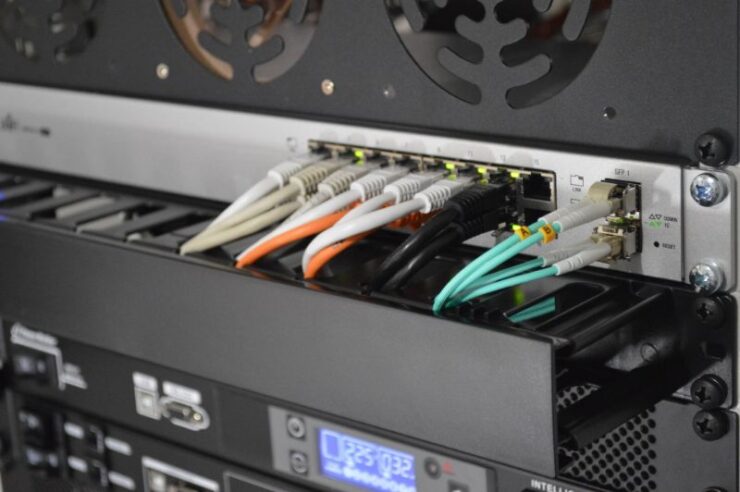Virtual sound card software allowing to send sound from one application to another.
Virtual Audio Cable (Shareware – $30/Windows) – virtual sound card software allowing you to transfer audio (wave) streams between applications and/or devices. Virtual Audio Cable creates a set of virtual audio devices named “Virtual Cables”, each of them consists of a pair of the waveform input/output devices. Any application can send audio stream to an output side of a cable, and any other application can receive this stream from an input side. All transfers are made digitally, providing NO sound quality loss (a bitperfect streaming).
Virtual Audio Cable behavior is similar to “What You Hear” (or “What U Hear”, “Stereo Mix”) feature of Sound Blaster Live! and Audigy sound cards. But it is only similar, not equivalent. If you simply need a function like “Stereo Mix” under Vista/Win7, there could be better to try to enable it in your sound card.
If more than one applications are sending audio to Virtual Cable device, Virtual Audio Cable mixes all streams together. If more than one applications are receiving audio from Virtual Cable device, Virtual Audio Cable distributes the same audio data among all targets.
Virtual Audio Cable is useful to record application’s audio output in real time (audio player, instant messenger or software synthesizer), or transfer a sound stream to another application processing it. You can, for example, use two or more software audio players/generators/synthesizers/sequencers to produce audio streams, sending them to Virtual Cable device and record a mixed stream from the same Virtual Cable device, using any recording software – Windows Sound Recorder, Audacity, MP3DirectCut, HardDiskOGG, Replay AV, Freecorder,…
With an ASIO wrapper like ASIO4ALL from Michael Tippach, you can use Virtual Audio Cable in ASIO supporting applications.
If you use an audio encoder application that encodes a stream coming from a sound card, you can use Virtual Audio Cable to supply such encoder with a stream produced by other application.
You can use Virtual Audio Cable to capture an output sound stream from the application that doesn’t allow to write it into WAV file directly. Unlike Audacity allowing you to simply save audio stream, Virtual Audio Cable allows to route it in real time.
If you are using some Voice Over IP (VoIP) and/or Internet Telephony applications like Skype, you can use Virtual Audio Cable to record your calls and conversations.
Virtual Audio Cable needs no hardware sound card; it is a “virtual sound card” itself.
Since Virtual Audio Cable 4 is a WDM driver, there are some benefits but some (generally older) applications that use MME (waveIn/waveOut) interface can work better with the older VAC 3 version. This version also supports Windows 98/ME.
Main features:
- Record any audio from your computer.
- Send any sound from your PC to an audio encoder.
- Control Panel application to dynamically configure cables.
- Volume control features.
- Audio Repeater application that transfers from any Wave In to any Wave Out port.
- Up 256 Virtual Cables (Windows limits number of MME devices to 32. Number of DirectSound devices is not limited). Trial version is limited to 3 cables only.
- Native WDM/KS audio technology.
- Almost any of fixed point PCM audio formats (200..1000000 samples per second, 8..32 bits per sample, 1..8 channels). Floating point formats are not supported.
- Almost no sound latency with maximal interrupt frequency.
- Unlimited number of clients connected to each port.
- Signal mixing (with saturation) between output port clients.
- PCM format conversion.
- Local session only (not available from Remote Desktop).
Platform: Windows XP/2003/Vista/Win7 (32-bit and 64-bit)

